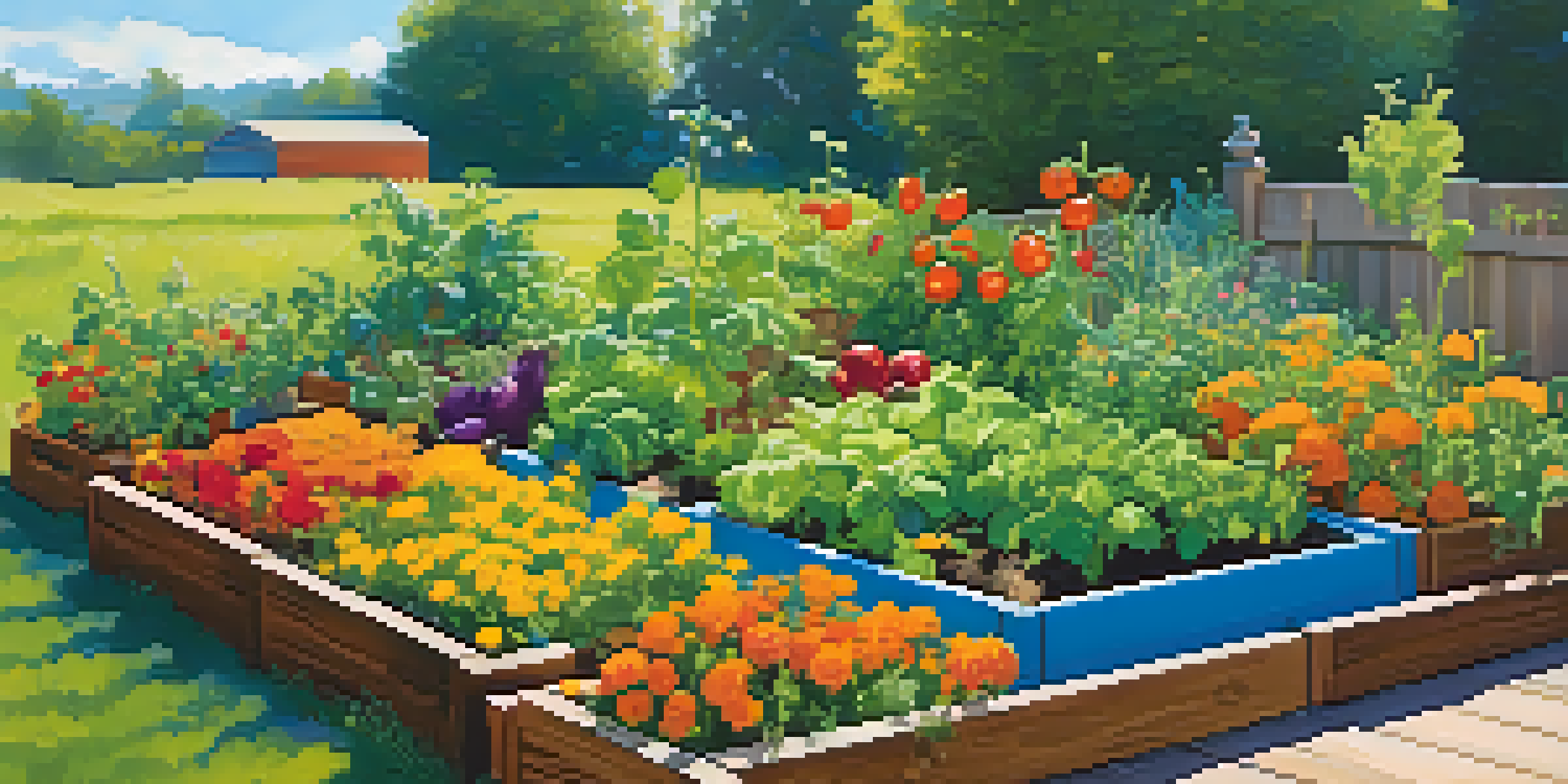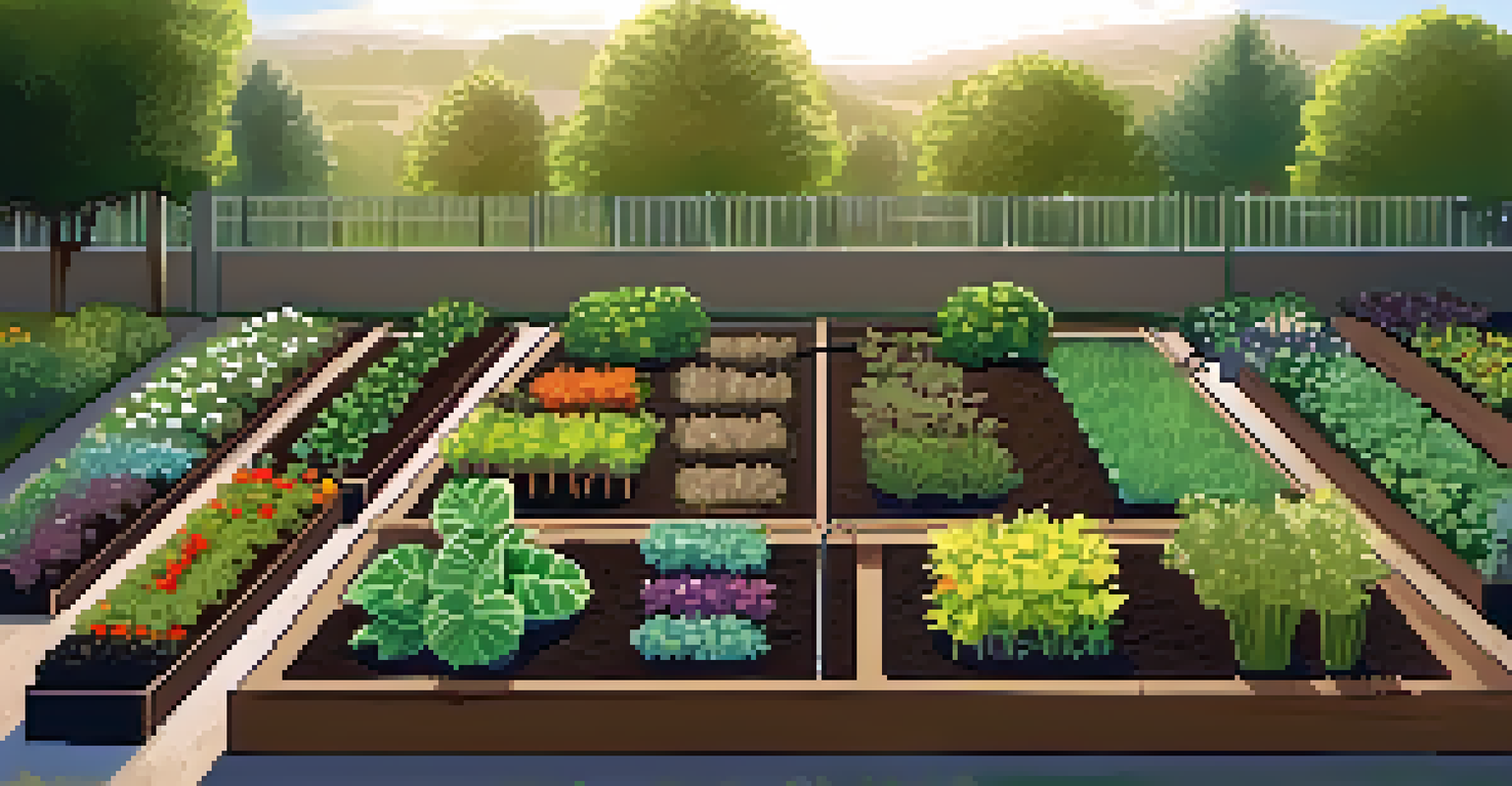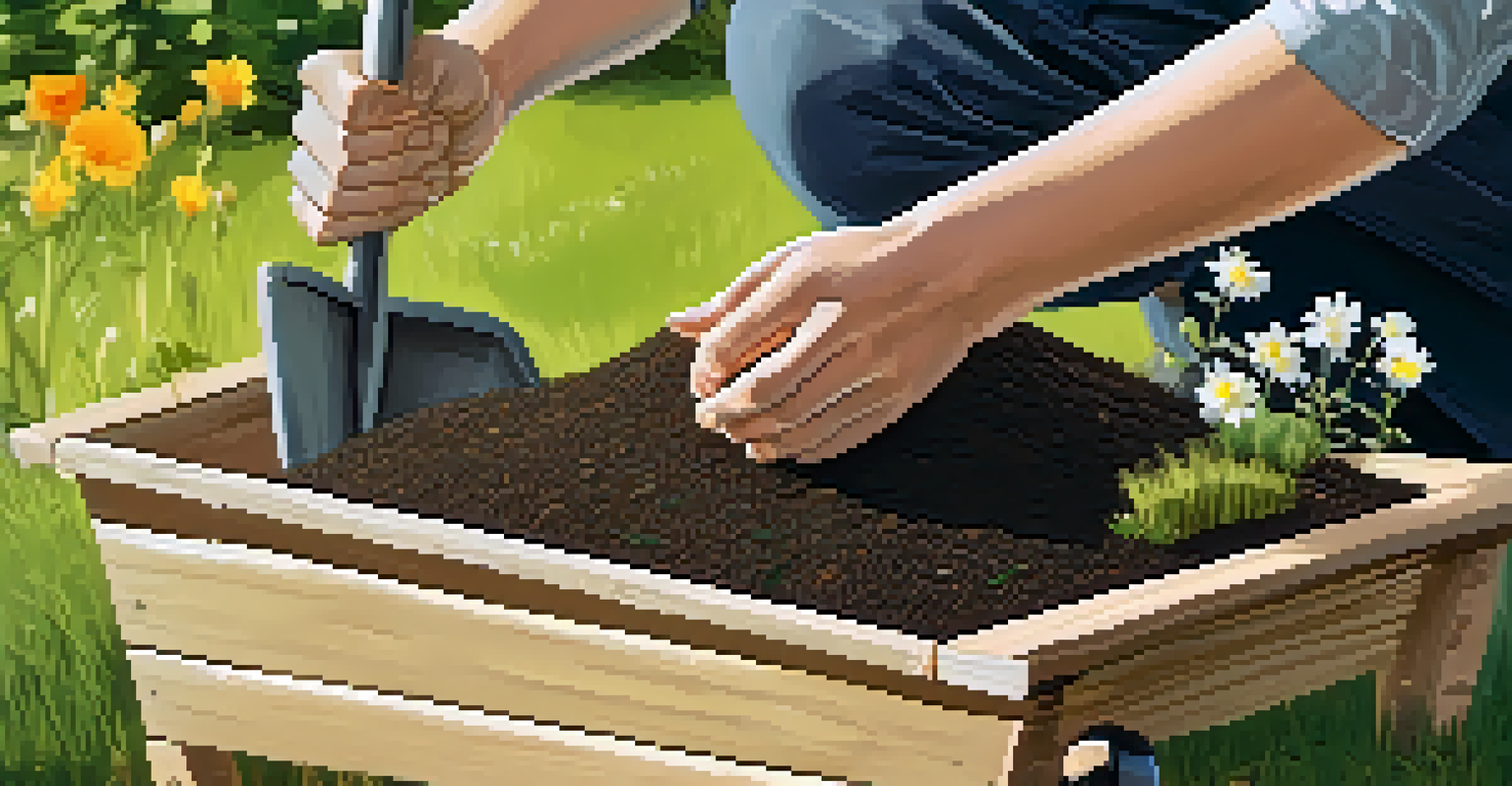Raised Bed Gardening: Ideal for Small Backyard Spaces

Understanding Raised Bed Gardening and Its Benefits
Raised bed gardening involves planting in soil that is elevated above ground level, often in a contained structure. This method offers numerous advantages, especially for those with limited space. By gardening in raised beds, you can improve soil quality, reduce weeds, and enhance drainage, all of which contribute to healthier plants.
Gardening is not a job; it's a way of life.
One of the greatest benefits is the ease of access; raised beds can be built to a height that reduces bending and kneeling, making gardening more accessible to everyone. Additionally, they can often be placed in sunny spots that may not be suitable for traditional gardens. This flexibility allows you to optimize your small backyard space effectively.
Moreover, raised beds can be designed to fit any shape or size, allowing you to customize your garden to your preferences. This adaptability means you can create a beautiful garden even in a compact area, maximizing your growing potential while adding aesthetic value to your outdoor space.
Choosing the Right Location for Your Raised Bed
Selecting the perfect location for your raised bed is crucial for successful gardening. Ideally, you want a spot that receives at least six hours of sunlight daily, as most vegetables and flowers thrive in bright conditions. Additionally, consider proximity to a water source to make irrigation easier.

It's also important to avoid placing your raised bed in areas with heavy shade from trees or buildings, as this can stunt growth. A slight slope may be beneficial for drainage, but avoid areas where water tends to pool. Observing your yard throughout the day can help you identify the best spots.
Benefits of Raised Bed Gardening
Raised bed gardening improves soil quality, reduces weeds, and enhances drainage, making it an accessible option for limited spaces.
Lastly, think about accessibility. You want to ensure that you can easily reach all areas of your raised bed without straining yourself. A well-placed raised bed not only enhances your gardening experience but also makes maintenance a breeze.
Selecting the Right Materials for Your Raised Bed
When it comes to building your raised bed, the materials you choose can significantly impact its longevity and functionality. Common options include untreated wood, bricks, or composite materials. Untreated wood is popular due to its natural look and affordability, but it may require replacement every few years.
The love of gardening is a seed once sown that never dies.
Alternatively, bricks and stones offer durability and a more permanent structure. They can be more expensive but are excellent for creating a stunning garden feature. If you're looking for a low-maintenance option, composite materials are resistant to rot and can last for decades without significant wear.
Consider the aesthetics as well; your raised bed should complement your backyard's overall design. Choose materials that not only serve a practical purpose but also enhance the visual appeal of your garden space.
Soil Preparation for Healthy Plant Growth
The success of your raised bed garden largely depends on the quality of the soil you use. A well-balanced mix of soil, compost, and other organic materials is key to providing nutrients to your plants. Aim for a mix that retains moisture while allowing for adequate drainage, which is crucial for root health.
You might consider using a pre-packaged garden soil blend, but creating your own mix can be rewarding. A common recipe includes one part topsoil, one part compost, and one part peat moss or coconut coir. This combination provides a nutrient-rich environment that supports plant growth beautifully.
Choosing Ideal Plant Locations
Selecting a sunny, accessible location for your raised bed is essential for optimal plant growth and ease of maintenance.
Don't forget to test your soil's pH and nutrient levels, as this can help you make necessary adjustments. Healthy soil is the foundation of a thriving garden, so take the time to prepare it properly for the best results.
Choosing the Right Plants for Your Raised Bed
When selecting plants for your raised bed, it’s essential to consider space and sunlight requirements. Compact varieties of vegetables, herbs, and flowers are ideal for small spaces. For instance, dwarf tomato plants, salad greens, and herbs like basil and parsley all thrive in raised beds.
Additionally, think about companion planting, which involves placing plants together that benefit each other. For example, planting marigolds alongside vegetables can deter pests while enhancing growth. It's a smart strategy that maximizes the benefits of your limited space.
Don't forget to stagger your planting times for a continuous harvest. By sowing seeds at different intervals, you can enjoy fresh produce throughout the growing season, making the most of your raised bed garden.
Watering Techniques for Efficient Gardening
Watering your raised bed garden correctly is vital for the health of your plants, especially since they can dry out faster than traditional gardens. A consistent watering schedule is essential, particularly during hot weather. A good rule of thumb is to provide about an inch of water per week, either through rainfall or irrigation.
Consider using drip irrigation or soaker hoses, which deliver water directly to the soil, minimizing evaporation and ensuring that moisture reaches the roots. These methods are efficient and can save you time while promoting healthier plants.
Essential Soil Preparation Tips
A well-balanced mix of soil, compost, and organic materials is crucial for providing the nutrients needed for healthy plant growth.
Mulching is another excellent technique to retain soil moisture and reduce weed growth. Organic materials like straw or wood chips can create a protective layer that keeps your soil moist and promotes a healthy growing environment.
Maintaining Your Raised Bed Garden Year-Round
Maintaining your raised bed garden involves regular care, but it doesn't have to be overwhelming. Start with routine tasks such as weeding, watering, and checking for pests. Frequent monitoring allows you to catch problems early and keep your garden thriving.
Incorporating seasonal tasks, like adding compost in the spring or mulching in the fall, can significantly enhance your garden’s health. Additionally, rotating your crops each year helps prevent soil depletion and minimizes pest issues.

Consider extending your gardening season with row covers or cold frames during cooler months. These simple structures can protect your plants from frost, allowing you to enjoy fresh produce even in less-than-ideal weather.